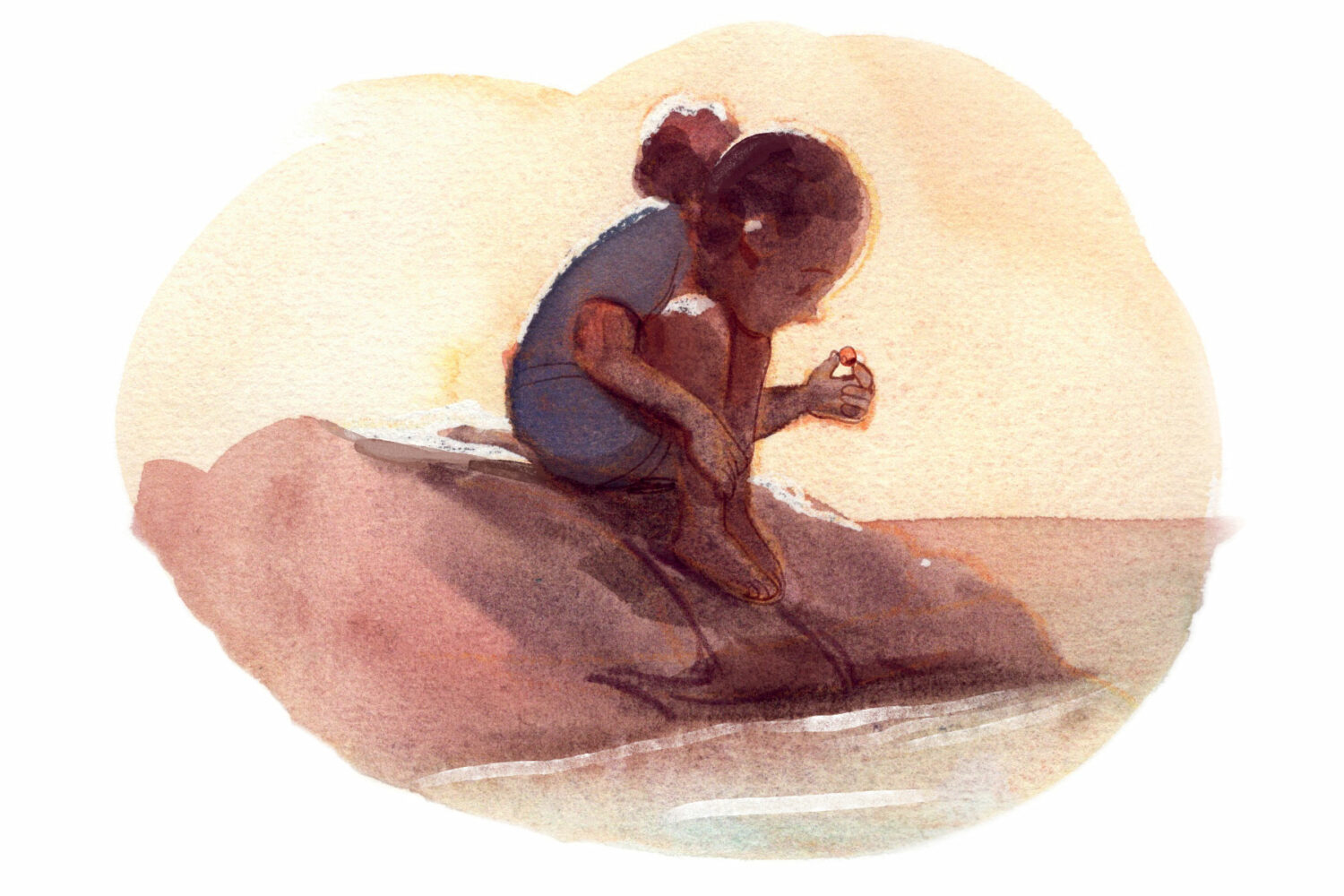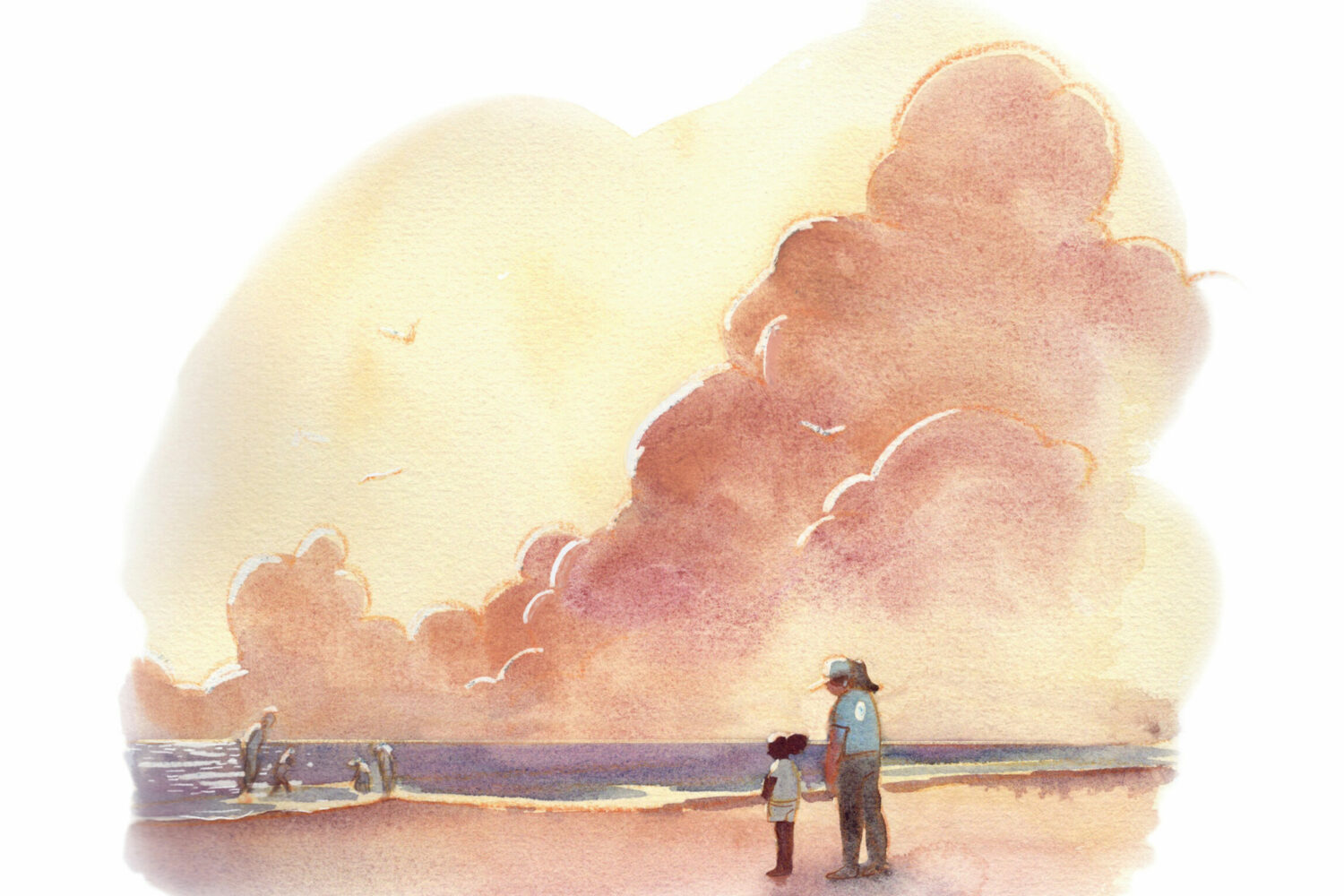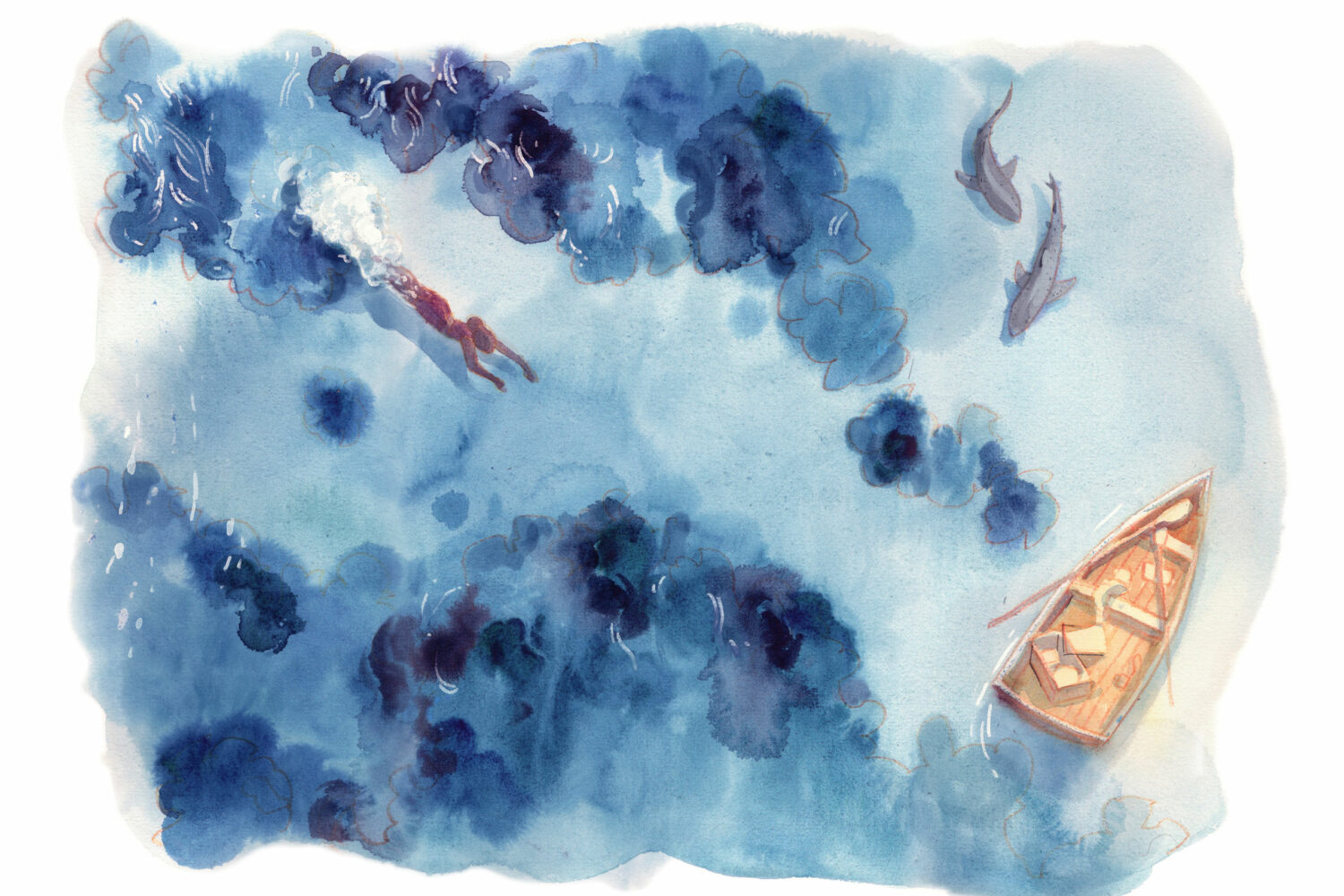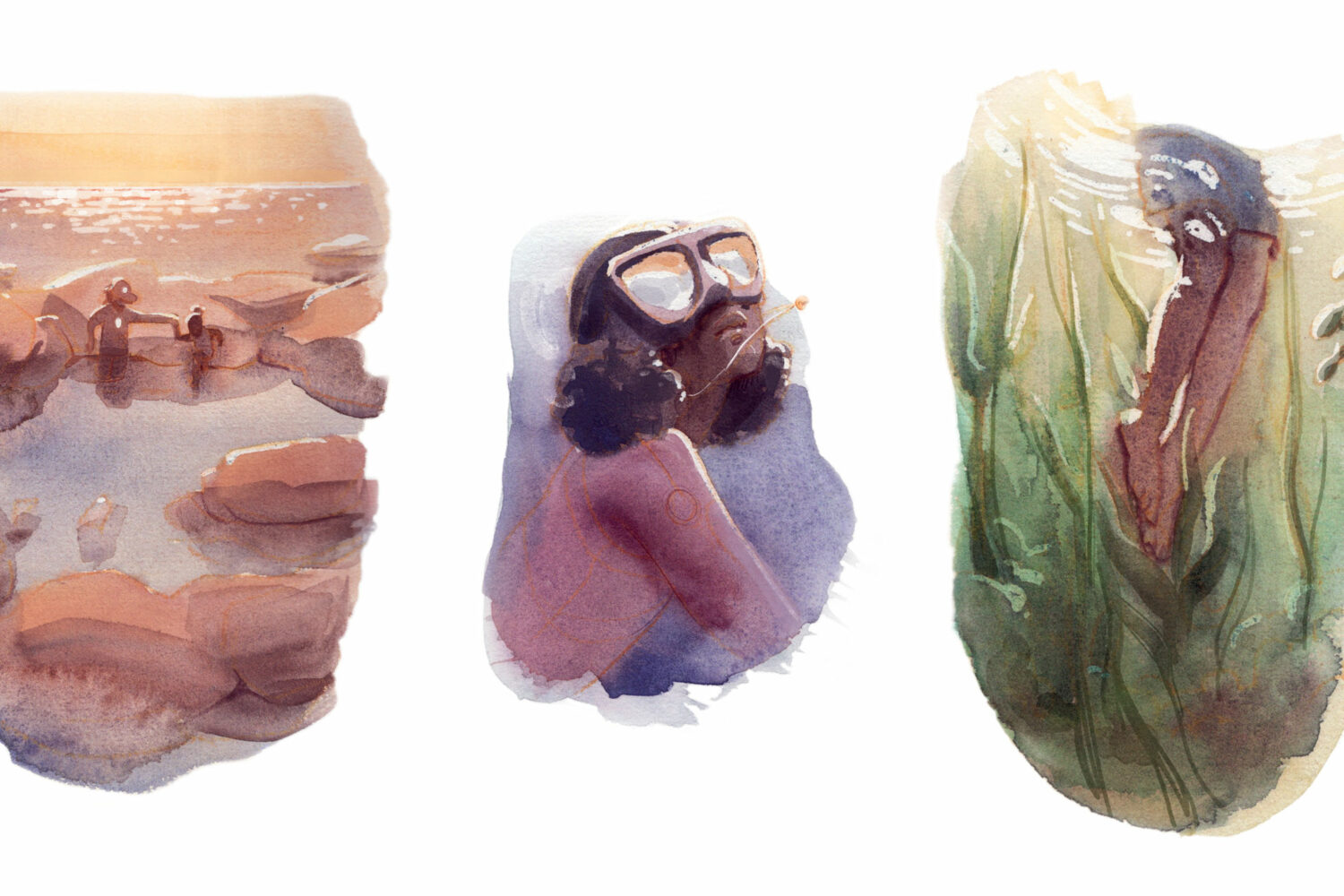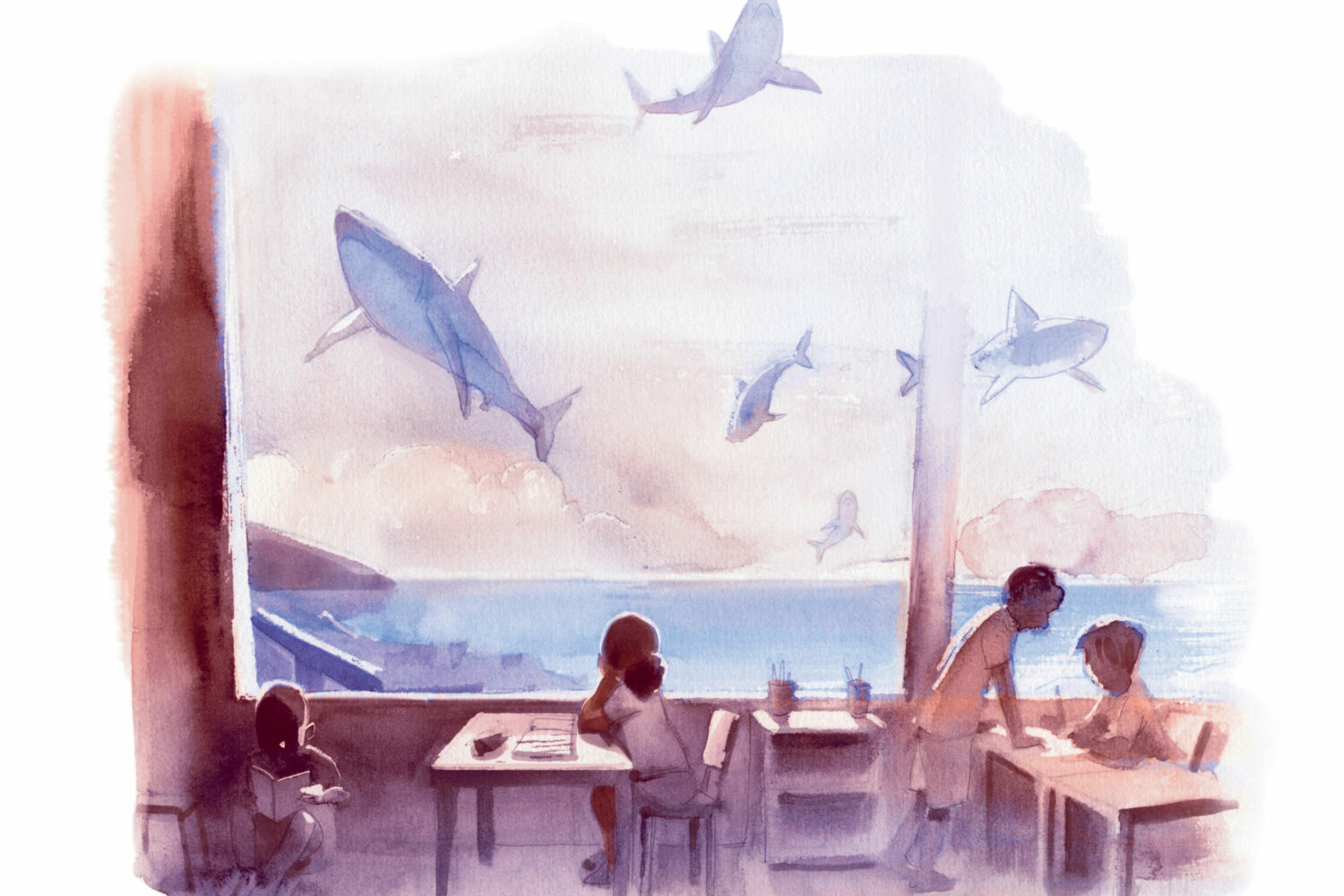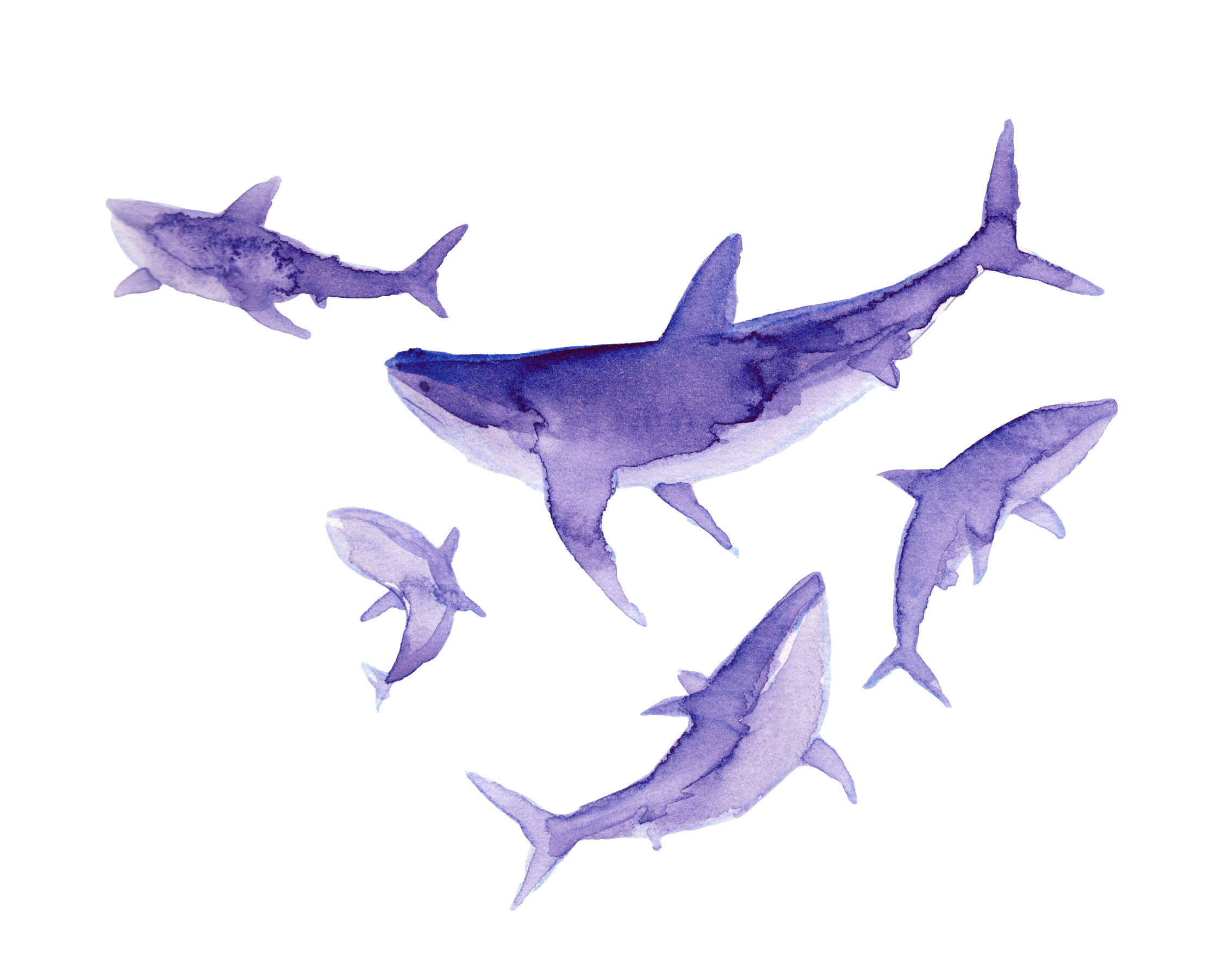Pages of celebration
The new Save Our Seas Magazine reflects on 20 years of shark conservation
Transportive, inspirational and (we hope most especially) celebratory, the 12th edition of Save Our Seas, the magazine of the Save Our Seas Foundation, is now available online and in print. In the 20th anniversary year of the SOSF, it was important to us that this edition be a moment for pause and reflection; for consideration of what has been achieved in the science and conservation world, and a chance to look with cautious hope to the future. For 11 previous editions, Save Our Seas has paired striking imagery and thoughtful visuals with stories from our project leaders and insights into the world of shark research, conservation, and education. At its heart, the magazine has always been a celebration: of the people whose work we hope may chart a course for a more sustainable future, and of the natural world they are dedicated to protecting. But a birthday edition of the magazine called for a scope wide enough to offer readers new perspectives on our work and our 20-year journey in the conservation funding world. We wanted to place the evolution of the SOSF in context with where our world has moved from 2003 to 2023.
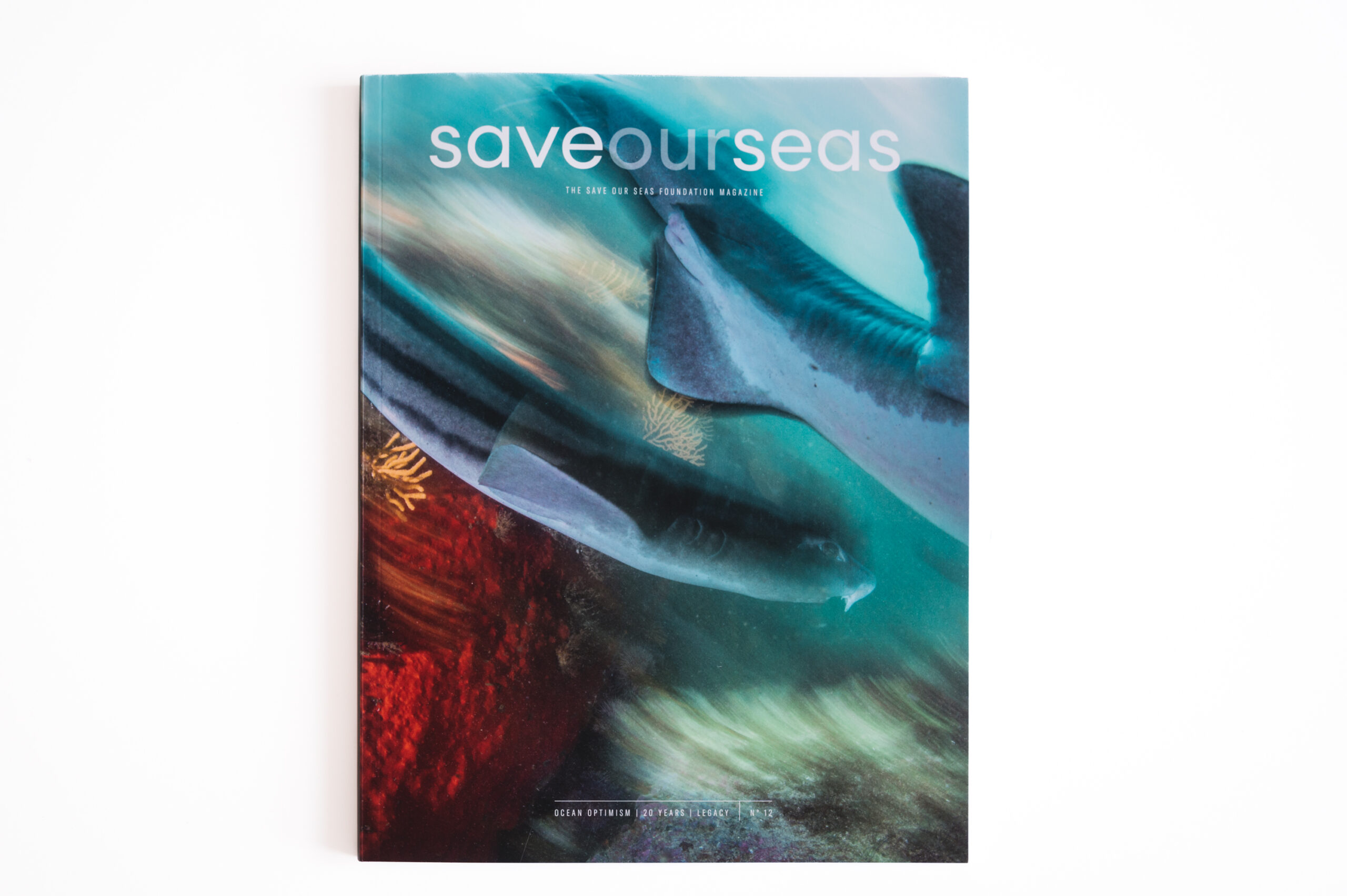
Contributors that celebrate a storytelling legacy
Immersing readers in our oceans using powerful imagery is a legacy of the SOSF that needed careful consideration for this edition. With contributions over the years from stellar photographers, and a focus from the Foundation on supporting emerging talent through the Ocean Storytelling Photography Grants, every image that is selected for the magazine undergoes a fair amount of scrutiny and debate from the editorial team. Bringing visual storytelling to a serendipitous full-circle, Thomas Peschak’s Wild Seas photo essay both navigates into the challenging and enchanting reaches of our oceans, and pays homage to Peschak’s own incredible journey with the SOSF. A National Geographic Explorer and Photographer, Peshchak’s connection to the SOSF started 15 years ago as expedition photographer and has evolved to his current position as Director of Storytelling.

Punches of colour punctuate our interview with the SOSF scientific advisory board. The artworks by South African designer Xee Summer are bright and bold, adding interest to the photographs across the edition. The dreamy watercolours of Swiss illustrator Rebecca Traunig add whimsy and wonder to Dr Isla Hodgon’s musings on a child’s connection to Nature in an increasingly eco-anxious society. And so, we found that in this edition, the balance between photography, artwork and illustrations was one that we hoped would draw our readership in, piquing their interest just enough to skim a caption (which we specifically designed to communicate information that augments the ideas captured in the text stories) and then delve into the words of our contributing writers with an active and engaged mind. From the newspaper cartoon style of Swiss artist Régric to the joy of our children’s section Ocean Fun, designer James Thom and the editorial team have given their all to ensuring that the 12th edition of Save Our Seas is a fitting nod to the visual storytelling legacy of the SOSF.
planktivorous whale shark dwarfs a diver; so much of what we think about sharks has required a perspective shift in the course of 20 years. Photo © Sebastian Staines
20 years of sharks and rays
How do you distil two decades of work into a few stories? The magic of our contributing writers’ abilities is that they can do two things simultaneously: plant our readers firmly in the present, communicating exactly why the story they tell is important, and fly our readers out over the full landscape of the tale to give an overview of how we ended up where we are in 2023. Our writing team ended up – unintentionally – comprised of all-women storytellers. As the editor and scientific writer for the SOSF, I found this to again be a touch of important serendipity: the SOSF’s Ocean Storytelling Writing Grant which launched this year focused on attracting women and writers from diverse backgrounds and countries. That an entire panel of writers, comprising such formidable talent and experience, would be comprised of women for our anniversary edition seems a fitting example of where our emerging talent are destined to go, and what supporting talent may do for the conservation journalism sector in the future.
Marine biologist, writer and broadcaster Dr Helen Scales almost needs no introduction here; every ocean enthusiast and beachcombing naturalist has a bookshelf peppered with her work from The Brilliant Abyss to Spirals in Time and her contributions to the Guardian and National Geographic. In this edition, she tackles the topic of conservation genetics and the relevance of the work of the Save our Seas Foundation Shark Research Center (SOSF-SRC): from pea plants to Dolly Parton’s cloned farmyard namesake, the field of genetics is as wide as it is specialist. But far from science-for-science-sake, the conservation relevance of genetics is something we’ll increasingly encounter as our climate changes, fisheries decline and illegal trade booms. The work of the SOSF-SRC meets us at a time when understanding resilience and redundancy helps us plan for climate change, when unlocking shark DNA is key to combating illegal wildlife trade, and drawing genetic boundaries around shark populations redefines the map of our borderless oceans, helping us to manage fisheries differently.
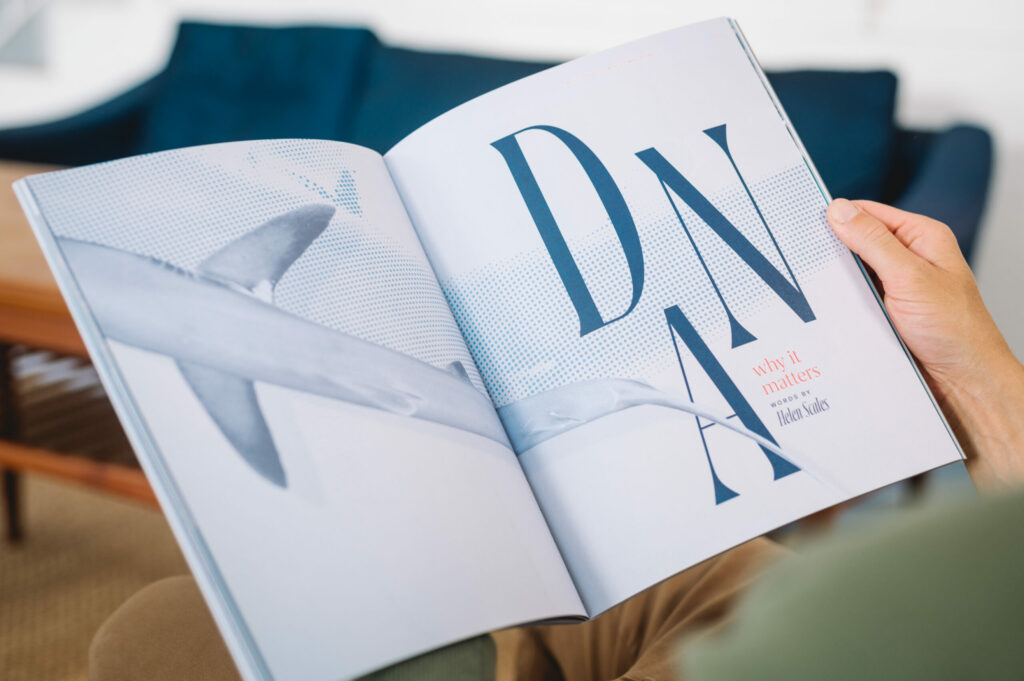 Science communicator Lois Flounders brings our attention to the link between our oceans and our livelihoods, exploring the importance of the work done at the Save Our Seas Foundation D’Arros Research Centre (SOSF-DRC) in the wider context of its place in the Western Indian Ocean (WIO). With fifteen years given as the bleak projection by some researchers who forecast the decline of fisheries and tourism and increasing climate change impacts in the WIO, maintaining functional ecosystems and safeguarding places where the ocean can recover is important. D’Arros Island and St Joseph Atoll are near-pristine, remote – and a potential source of rejuvenation not only for the coral reef ocean life they host, but of opportunities for new livelihoods and leadership in Seychellois-led conservation. When deciding on other important stories to tell, the editorial team also felt that we have reached a point in history where children are to inherit, not the joy of Nature, but the sense of responsibility for its rescue. How then do we introduce children to the ocean with the appropriate capacity for play and protection? How do we instil a sense of wonder and appreciation? In this context, Dr Isla Hodgson, host of the SOSF World of Sharks podcast, writes about the Save Our Seas Foundation Shark Education Centre’s (SOSF-SEC) challenging but important role in creating awareness of both our custodianship of Nature, and its incredible benefits to our hearts, minds, and development.
Science communicator Lois Flounders brings our attention to the link between our oceans and our livelihoods, exploring the importance of the work done at the Save Our Seas Foundation D’Arros Research Centre (SOSF-DRC) in the wider context of its place in the Western Indian Ocean (WIO). With fifteen years given as the bleak projection by some researchers who forecast the decline of fisheries and tourism and increasing climate change impacts in the WIO, maintaining functional ecosystems and safeguarding places where the ocean can recover is important. D’Arros Island and St Joseph Atoll are near-pristine, remote – and a potential source of rejuvenation not only for the coral reef ocean life they host, but of opportunities for new livelihoods and leadership in Seychellois-led conservation. When deciding on other important stories to tell, the editorial team also felt that we have reached a point in history where children are to inherit, not the joy of Nature, but the sense of responsibility for its rescue. How then do we introduce children to the ocean with the appropriate capacity for play and protection? How do we instil a sense of wonder and appreciation? In this context, Dr Isla Hodgson, host of the SOSF World of Sharks podcast, writes about the Save Our Seas Foundation Shark Education Centre’s (SOSF-SEC) challenging but important role in creating awareness of both our custodianship of Nature, and its incredible benefits to our hearts, minds, and development.
Playing with protection
Oscar-winning director and conservation storyteller Pippa Ehrlich interviews the Founder of the SOSF, his first interview, and we look at key recent shark conservation stories like the historic CITES listings in late 2022. We gathered the collective minds of our scientific advisors, Sarah Fowler, Dr Andrew Chin, and Dr Dean Grubbs, to collate their thoughts on how much has changed since 2003 – and cast their minds forward to what the challenges of the future will bring.
Reflection and relevance: the role of a conservation magazine
In twenty years, the challenges for our planet and our place on it have multiplied. The scientists from the Intergovernmental Panel on Climate Change (IPCC) released reports that once warned us in alarmed tones, and then strident calls to action, but now lately seem almost to heave a sigh of resignation under the weight of their message. The latest International Union for the Conservation of Nature (IUCN) Red List updates show that more than one-third of sharks and rays are threatened with extinction. To quote Dr Andrew Chin from the feature article in our magazine:
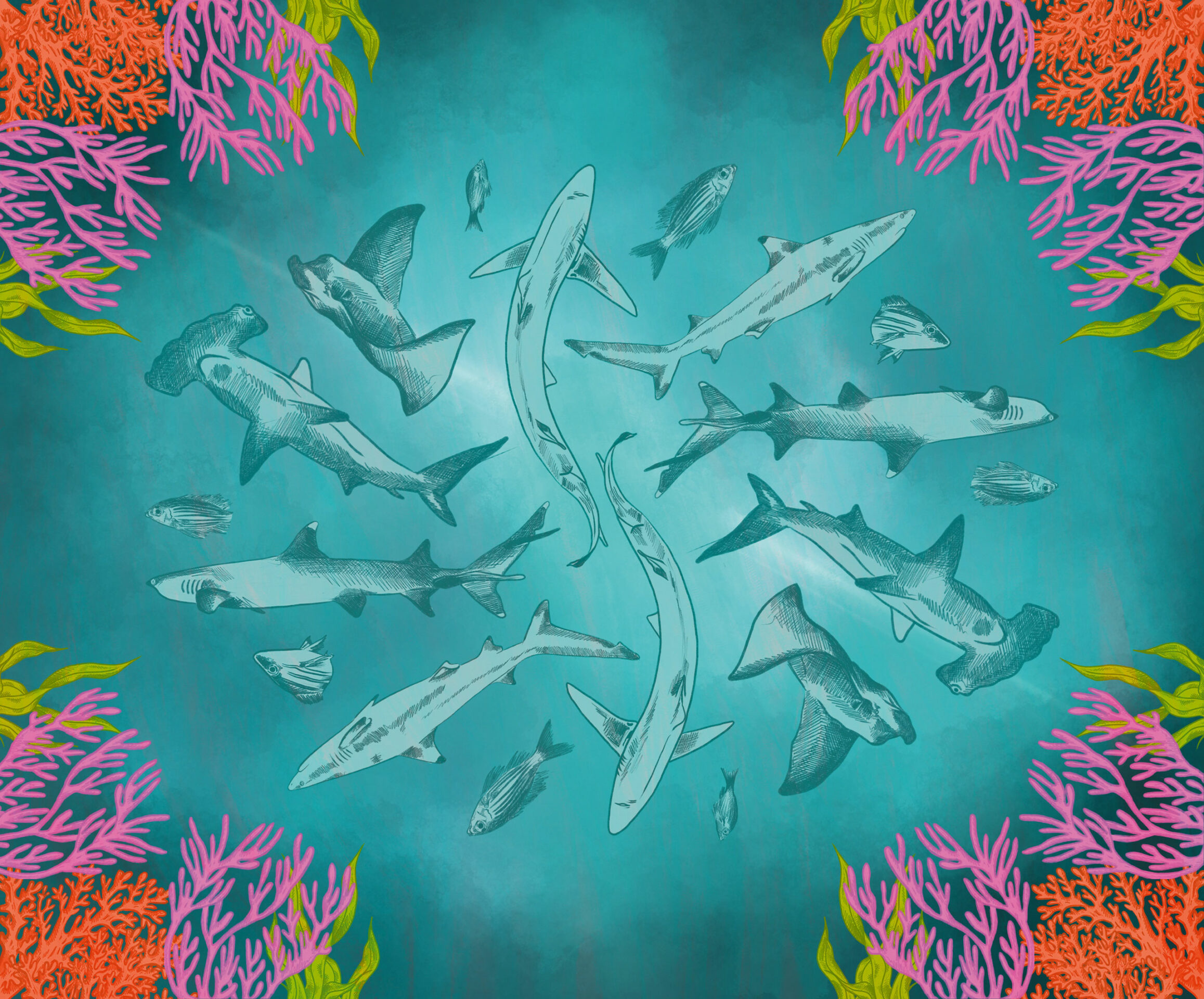
Illustration by XEE SUMMER | © Save Our Seas Foundation

